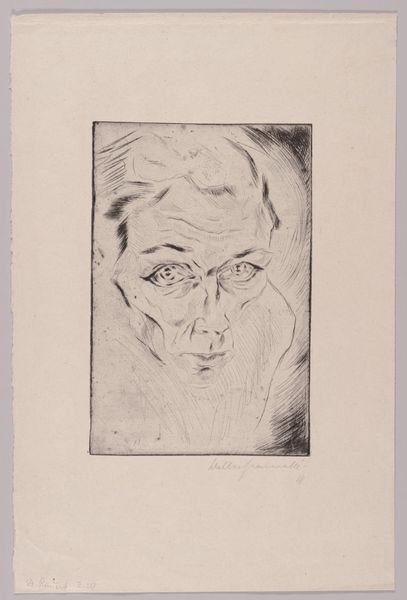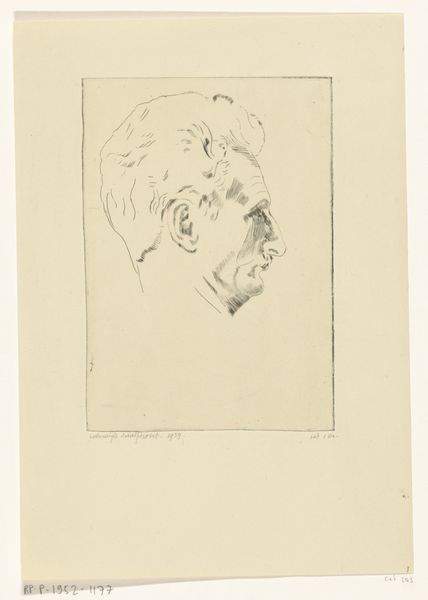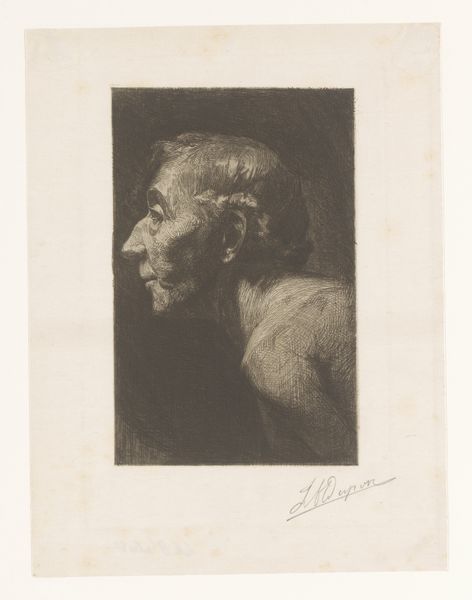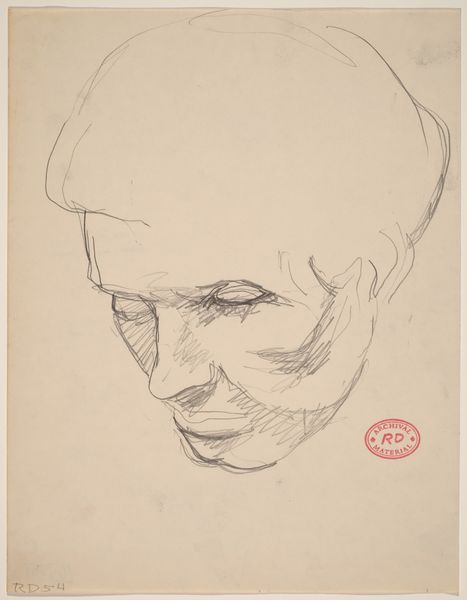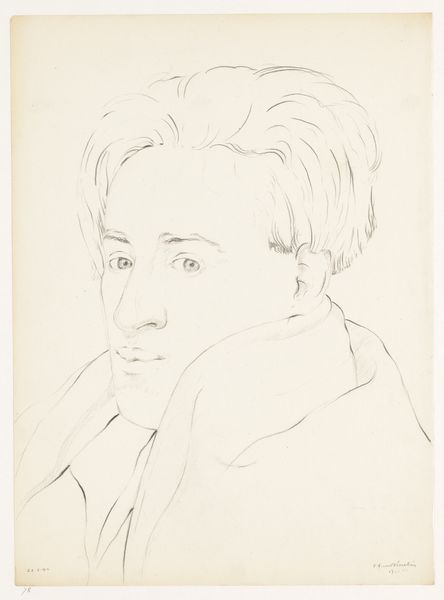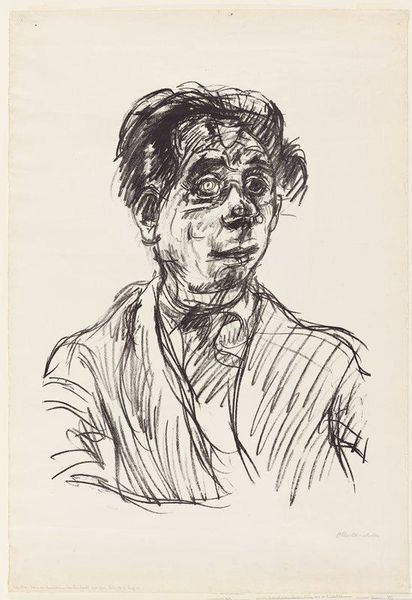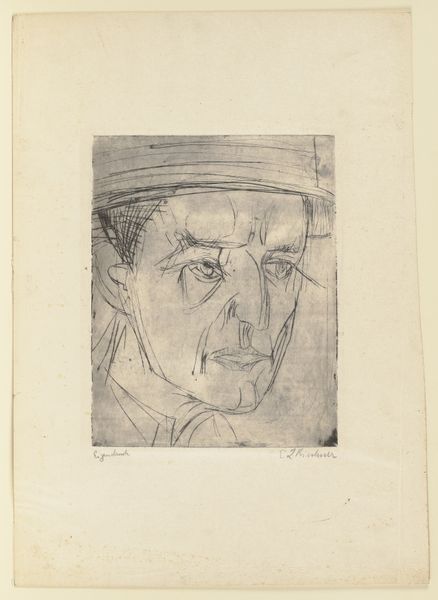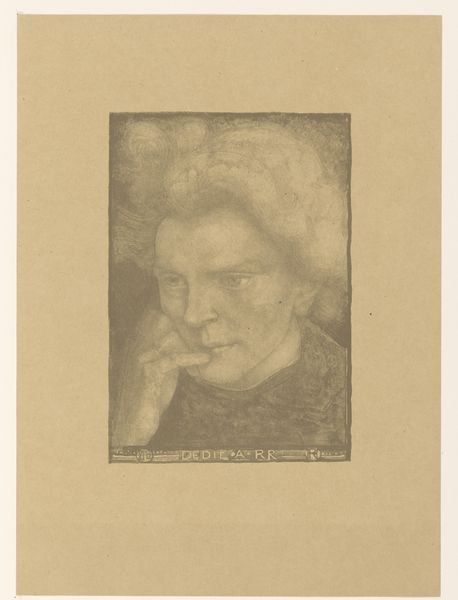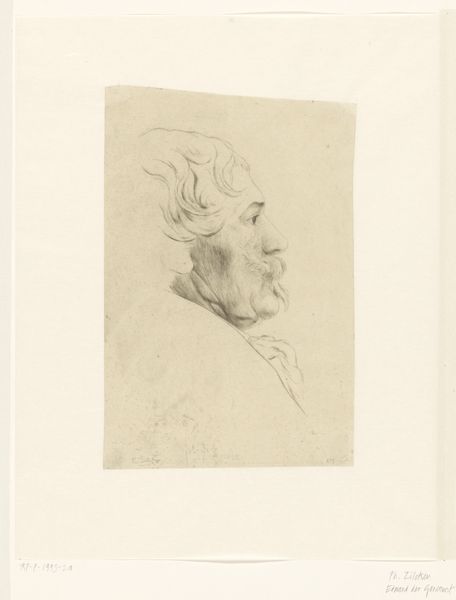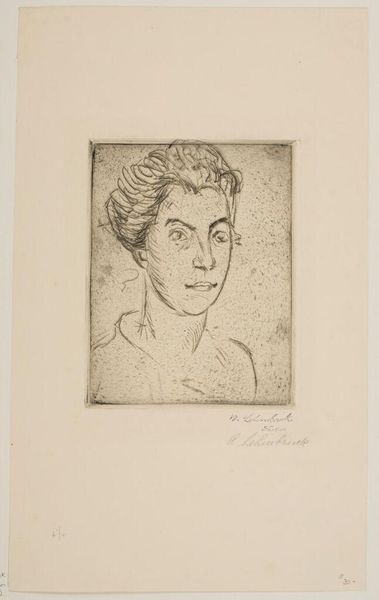
#
pencil drawn
#
light pencil work
#
ink paper printed
#
pencil sketch
#
light coloured
#
old engraving style
#
personal sketchbook
#
ink drawing experimentation
#
sketchbook drawing
#
pencil work
Dimensions: height 240 mm, width 178 mm
Copyright: Rijks Museum: Open Domain
Curator: Here we have Wilhelm Lehmbruck's "Head of a Woman," created after 1919. It's a printed work on paper, seemingly an etching or a drypoint. Editor: There's an immediate sense of melancholy about this piece. The woman's closed eyes and downward gaze evoke a profound sadness. It feels very intimate, almost voyeuristic, like capturing a private moment of despair. Curator: Lehmbruck’s work often grapples with themes of alienation and human suffering. Coming after the horrors of World War I, this piece, like much of his oeuvre, can be viewed as a response to the trauma inflicted upon Europe, and to his own struggle with depression and disillusionment, culminating in his suicide. This head reflects an emerging image of femininity in post-war German society and in Expressionist art circles more widely: grief-stricken, vulnerable, but undeniably present. Editor: It makes me think about the performative nature of grief in women during that period and even today. Was she expected to embody sorrow, a visible reminder of loss? Does the artist seek to give her back some sense of privacy? Also, the etching technique with the sharp lines almost seems to physically etch the pain into her features. There’s something undeniably unsettling, but deeply compelling, about it. Curator: Indeed. Consider also the public role of art during those years, particularly in Germany. Artists like Lehmbruck used their work to process and to provoke dialogue about war's repercussions. He wanted the viewer to engage in a deeper social reckoning by picturing female figures not just as passive subjects but complex sufferers of that violent moment in time. Editor: Absolutely, it's not just about portraying grief but using her image as a catalyst for wider conversations about loss, recovery, and societal expectations. What I see, too, in the sketch's roughness, the unfinished quality, is an assertion that perhaps this woman is a project yet to be fulfilled. She will have to complete it. The incompleteness of the print itself opens into future making, not just the moment depicted. Curator: The reception history of Lehmbruck’s works highlights shifts in cultural sensitivity and evolving understanding of psychological trauma. Today, viewing this "Head of a Woman," we may perhaps bring fresh understanding on what representation entails when dealing with trauma and suffering, especially concerning gender and social class. Editor: Looking at this etching, I find myself contemplating our responsibility as viewers when encountering art that confronts such profound emotions. It's a call for empathy and critical awareness, challenging us to confront uncomfortable truths. Curator: A poignant observation indeed, which reaffirms art’s capacity to foster essential social discussions, whether in its time, or our own.
Comments
No comments
Be the first to comment and join the conversation on the ultimate creative platform.
